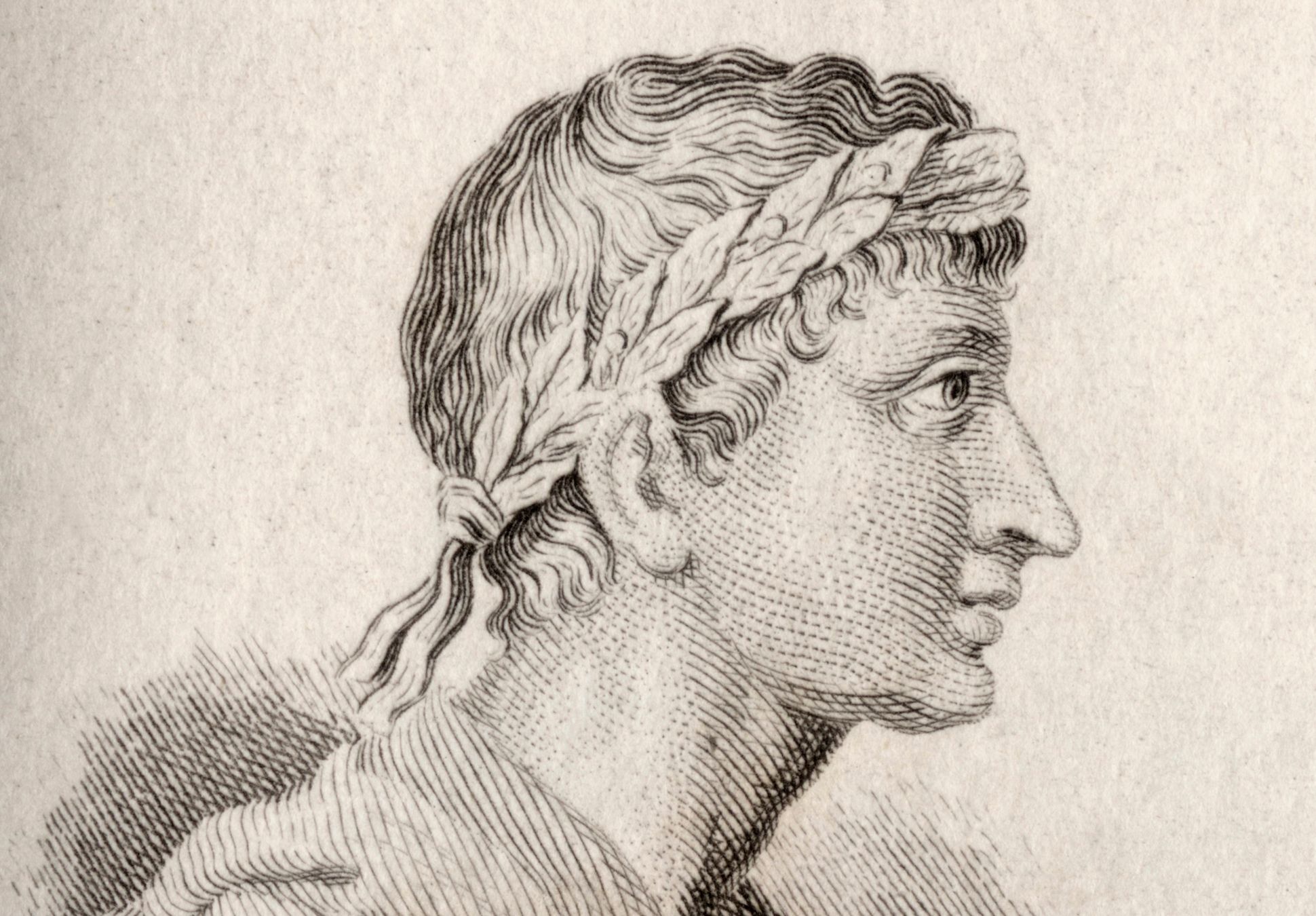Ovid

Publius Ovidius Naso, known as Ovid, was born in Sulmo, Italy, on March 20, 43 BCE. Considered one of the most influential poets in the Western literary tradition, Ovid wrote works including Heroides (“Heroines”), Amores (“Loves”), Ars amatoria (“The Art of Love”), Metamorphoses, and Tristia (“Sorrows”). He completed his most famous and revered poem Metamorphoses around 8 BCE, and it is regarded as a masterpiece alongside the works of Homer and Virgil. Near the end of his life, Ovid was exiled to Tomis, a Black Sea port city in modern-day Constanța, Romania, where he died in his sixties.
Among Ovid’s early poetic influences were Hellenistic poets such as Callimachus and the Roman poets Catullus and Propertius, the latter two of which influenced Ovid’s use of elegiaccouplets. In early works like Amores and Ars amatoria, Ovid adopted a poetic form inspired by Catullus and Propertius consisting of a line in dactylichexameter followed by one in dactylic pentameter. Through this choice of meter he conveyed the intensity of love and desire with unique rhythm and structure.
Ovid’s exploration of love, passion, and the complexities of romantic relationships aligns with the themes often found in the works of his poetic predecessors. Like Catullus and Propertius’s poetry, Amores delves into the realm of emotions and navigates the joys and frustrations of love and relationships and the trials of romantic conquests.
Transformation and metamorphosis is a central theme of Ovid’s work, most notably in Metamorphoses. A repository of Roman and Greek mythology, Metamorphoses explores the concept of change, both physical and emotional, that Ovid regularly referenced throughout his work.
Along with his senior contemporaries Horace and Virgil, Ovid was a well-known member of the Roman literary circles and often referenced them in his poetry. For example, in “Amores 1.15,” Ovid delivers a sphragis (“seal”) to his first publication and directly references “Odes 3.30,” Horace’s “exegi monumentum”odein which he claimed his poetry would survive long after his own death. Toward the end of Ovid’s career, he discussed his immortality again, with reference to Horace, in “Tristia 3.3.”
In addition to his better-known works, Ovid wrote the Heroides, a collection of epistolary poems written from the perspective of famous women from mythology, such as Penelope, Dido, and Medea, addressing their absent lovers.
Historians know very little about the details of Ovid’s life. He was born into an upper-middle-class family, and to prepare for a professional career, he was sent to Rome to study rhetoric, the standard core of study for Roman education at the time. Upon completion of his studies, he spent a year in Athens studying philosophy, after which his family presumed he would return home to begin his career. While Ovid did return to spend a year as a public official, poetry soon became his passion, and rather than choosing the life of a Roman official, he began to work on his first book. Heroides, Amores, and Ars amatoria were followed by 6 years in which Ovid penned Metamorphoses, was married three times, and fathered a daughter.
A defining event in Ovid’s life was his banishment to Tomi in 8 CE by the Roman Emperor Augustus. Some in Roman society considered Ars Amatoria scandalous due to its content, which included advice on love and seduction. Tried personally by Augustus himself, Ovid was found guilty of a crime warranting exile, though what the crime was exactly remains uncertain. Ovid spent his final years in Tomi writing long letters and poems of appeal asking Augustus to allow his return to Rome. The pleas were fruitless, and Ovid remained in exile until his death in 17 CE.
Ovid’s impact on art, literature, and culture continues to be deeply felt. His characters and stories are frequently referenced in contemporary literature, films, and other media. His tales of transformation, love, and mythology have inspired countless poets, writers, and artists throughout the ages, from Dante, Chaucer, and Shakespeare to Salman Rushdie and other contemporary authors. Ovid’s stories appear in several Shakespearean plays, including “Romeo and Juliet,” in part derived from Metamorphoses lovers Pyramus and Thisbe, and “A Midsummer Night’s Dream.” Ovid’s enduring impact on literature makes him a celebrated figure with a lasting literary legacy.


